Planet Venus: 20 interesting facts about the scorching world
Venus is undoubtedly one of the weirdest planets in the solar system.
- 1. Venus has a rich history
- 2. The pressure's on!
- It's just like Earth (well sort of)
- 4. It has many phases
- 5. Transits are very rare
- 6. It's hellishly hot
- 7. Venusian volcanicity
- 8. No companion
- 9. Life in the clouds?
- 10. A day feels like a year
- 11. 'Backwards' rotation
- 12. What the future holds
- 13. Turning back the clock
- 14. Loss of a magnetic feeling
- 15. It has had many spacecraft visitors
- 16. Case of the missing lightning
- 17. Soviet success at Venus
- 18. Shining bright
- 19. A source of shadows
- 20. Weird winds
Venus, the second planet from the sun and Earth's nearest planetary neighbor is an oddity in many ways. The hot, hellish planet spins backward and might even host life in its impenetrable clouds.
It is the sixth largest planet in the solar system and is sometimes referred to as 'Earth's twin' as the pair are similar in size and density. But don't be fooled, they are far from identical and are radically different in almost every other aspect.
Here we explore this eccentric planet with 20 interesting facts about Venus.
Related: Venera timeline: The Soviet Union's Venus missions in pictures

Lee Cavendish holds a degree in Observational Astronomy from the University of South Wales, United Kingdom, where his research interests focused on studying the main types of eclipsing binary star systems: Algol, Beta Lyrae and W Ursae Majoris.
1. Venus has a rich history

Studies of Venus can be traced back to the ancient Babylonians in 1600 BCE. They tracked the movement of several planets and stars. The oldest astronomical document on record is a Babylonian diary of Venus's appearances over 21 years. Venus played a serious part in the mythology of ancient civilizations, including the Mayans and Greeks. The name 'Venus' comes from the Roman goddess of love and beauty.
2. The pressure's on!
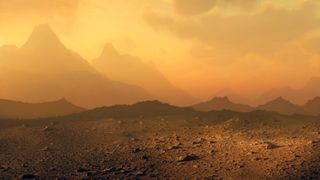
Walking around Venus would be an unbearable experience for several reasons, but one of them is the extreme pressures on the surface. The atmosphere creates air pressure that is over 90 times the air pressure on Earth, which is similar to the pressure around 0.6 miles (one kilometer) deep in the ocean.
It's just like Earth (well sort of)
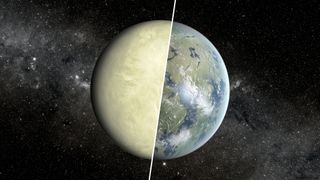
When looking purely at the physical parameters of Venus, it is remarkably similar to Earth. They are both almost the same in size and density, their compositions are similar and they both appear to have relatively young surfaces that are surrounded by an atmosphere with clouds. It's worth stating that Venus' clouds are primarily sulphuric acid though, which isn't something that you'd want raining down on you!
4. It has many phases

Venus experiences different phases, just like the moon. As Venus travels around the sun within the orbit of Earth, it changes between a 'morning star' and an 'evening star' roughly every nine-and-a-half months. During this period it shifts between different percentages of illumination, a trait that everyone normally associates with the moon.
5. Transits are very rare

Venus is one of two planets that orbit the sun within the orbital path of Earth. Along with Mercury, these two planets can find themselves between Earth and the sun, sometimes creating a silhouette that moves across the sun over hours. These journeys are known as 'transits', and Venus is known to transit in pairs, with over a century separating the pairs, making it a very rare event.
6. It's hellishly hot
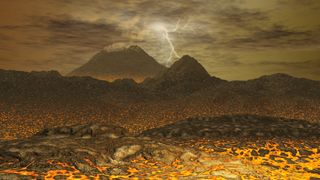
Venus is the hottest planet in the solar system, even hotter than the dayside of Mercury, which has temperatures of 801 degrees Fahrenheit (427 degrees Celsius). Because of Venus' thick, carbon dioxide-rich atmosphere, the heat is efficiently retained, creating surface temperatures higher than 880 degrees F (470 degrees C).
7. Venusian volcanicity

To add to the hellish image of Venus, it also has the most volcanoes present on the surface of all planets in the solar system. On Earth, there are 1,500 known active volcanoes, and Mars is best known for the largest volcano in the solar system, Olympus Mons. However, Venus has over 1,600 known major volcanoes, and that's not including the smaller ones or any that haven't been detected yet.
8. No companion
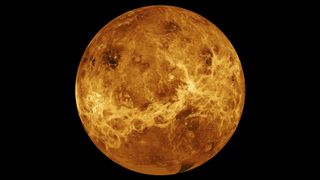
Venus and Mercury are the only planets in our solar system that do not have a moon of their own. It's a bit more understandable as to why Mercury doesn't have a moon, because its close proximity to the sun has a negative effect on any contenders, and it is even smaller than some known moons such as Jupiter's Ganymede and Saturn's Titan. However, researchers have argued that the reason Venus doesn't have a moon isn't as simplistic.
There are two theories: the first is that any moon that Venus had was stolen by the sun's gravity. The second is known as the 'double-impact theory', which states that a large celestial body hit Venus billions of years ago and created a moon, in a similar way to how Earth got its lunar companion. But several million years later, an even bigger object hit Venus, causing the retrograde rotation, weakening the tidal forces and sending the moon to sink into Venus, never to be seen again.
9. Life in the clouds?

Contrary to what the previous facts have strongly suggested, researchers have proposed that life could be found on Venus — just not on the surface. A study by Sanjay Limaye of the University of Wisconsin-Madison's Space Science and Engineering Center suggested that microbial life could be present in the cloud tops.
Microbial life on Earth has been found at altitudes of 25 miles (41 km), and these researchers have said that conditions on Venus that would be favorable for life could exist in the clouds at altitudes of 30 to 32 miles (48 to 51 km). Here, temperatures would be roughly 140 degrees F (60 degrees C) and pressures would be similar to Earth at sea level.
10. A day feels like a year

On Venus, that is very much the case. One Venusian day, which is one complete rotation on its axis, takes 243 Earth days, making it the longest day of any other planet in the solar system. Even a year on Venus is shorter, as it takes 224.7 Earth days to complete one revolution around the sun.
11. 'Backwards' rotation

Another trait that makes Venus different from most of the planets in the solar system is its rotation. The usual routine for planets is to spin anti-clockwise on their axis, but Venus is an oddball and flaunts a clockwise rotation. The leading theory as to why Venus and Uranus have what is known as a 'retrograde rotation' is that they were smacked by large objects early in their history. This collision left the planet seeing stars and spinning the wrong way.
12. What the future holds
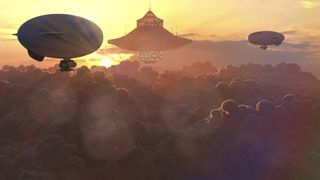
Researchers want to understand every planet in the solar system. Efforts in the late 20th century showed that Venus is a difficult planet to observe remotely from the surface, but with new technologies and a better understanding comes innovative exploration ideas. A lot of these new ideas have a common theme, which is exploring Venus from within the clouds.
As Venus has more favorable conditions in the clouds, with wind speeds that allow an object to travel around the planet much faster than it rotates, scientists are looking to introduce aircraft or airships. By utilizing solar and wind power, and the added help of buoyancy, robotic missions could become a feature of Venus in the foreseeable future.
13. Turning back the clock
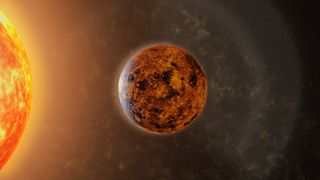
Venus wasn't much different from Earth once upon a time and could have even supported life. 700 million years ago, Venus suffered dramatic changes in its climate that saw it bulk up its atmosphere in a process known as a 'runaway greenhouse effect'. Before the runaway greenhouse effect took over, it is believed that Venus had a reasonable atmosphere and could have harbored liquid water for about 2 or 3 billion years. Before carbon dioxide dominated the atmosphere and made it too hot and dense, it is possible that Venus once had an environment that could have supported life for billions of years.
14. Loss of a magnetic feeling
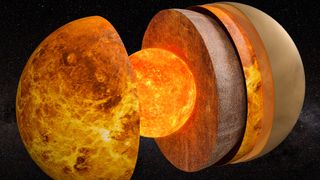
Although it is often referred to as Earth's twin, something that differentiates the two planets deep down to their cores is that Venus creates a negligible magnetic field. Planetary scientists believe that Venus has an iron core that is similar in size to Earth's. However, due to the sluggish rotation of Venus, consequently reducing the motion of the planet's core, this weakens the planet's magnetic field or magnetosphere.
15. It has had many spacecraft visitors

Before attention turned to the exploration of Mars and other planets in the solar system, Venus was the target that space agencies wanted to send their robotic missions to. This genesis of interplanetary exploration began with a lot of spacecraft and launch failures, starting with the Soviet Union's Tyazhely Sputnik in February 1961.
The first craft to aim for Venus experienced a launch failure, and there have since been 41 other missions launched to explore the planet. Of these missions, over 20 have been successful, and the first of these to conduct a successful planetary encounter was NASA's Mariner 2 space probe on 14 December 1962.
16. Case of the missing lightning
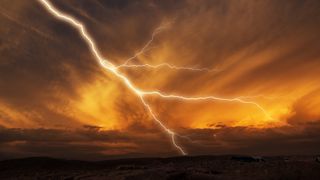
Electrical pulses are bursting through the heavy atmosphere, but the missions that have gone to Venus to find them have made it an even more confusing endeavor. Ground-based telescopes and space probes — including NASA's Cassini, the European Space Agency's Venus Express and the Japan Aerospace Exploration Agency's (JAXA) Akatsuki missions — have had nothing more than some subtle hints about the presence of Venusian lightning. Researchers believe it could still be present, but it is just much more localized and rare, which is why there has been no definitive evidence yet. Or it could be the case that there isn't lightning at all.
17. Soviet success at Venus

18. Shining bright
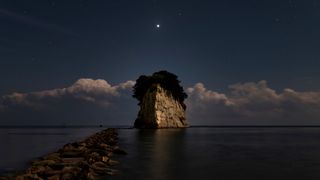
Because Venus is in such proximity to Earth, it is the third-brightest celestial object in the night sky, sitting behind the sun and the moon. The Latin nickname for Venus, which is largely unused in modern days, is 'Lucifer', which translates to 'light bringer'. Lucifer is also a name for the Devil, which is quite a coincidence considering the hellish conditions on the surface of Venus.
19. A source of shadows
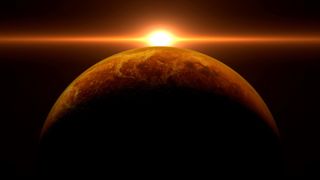
Because Venus is the third-brightest object in the night sky, it is bright enough to cast shadows on the surface of Earth. Only two other celestial objects are capable of this: the sun and the moon. However, very good eyesight is needed to see these Venusian shadows.
20. Weird winds

Although the planet moves slowly, the clouds move across the atmosphere once every four Earth days; this is known as 'superrotation'. This generates speeds of 224 miles (360 km) per hour, which surpasses the speeds of the most dangerous hurricanes on Earth. The speeds decrease with cloud height, creating winds that are just a few miles per hour on the surface.
Join our Space Forums to keep talking space on the latest missions, night sky and more! And if you have a news tip, correction or comment, let us know at: community@space.com.
Get the Space.com Newsletter
Breaking space news, the latest updates on rocket launches, skywatching events and more!
Lee Cavendish holds a degree in Observational Astronomy from the University of South Wales, United Kingdom, where his research interests focused on studying the main types of eclipsing binary star systems: Algol, Beta Lyrae and W Ursae Majoris. He is the former staff writer for our sister publication All About Space magazine, where he covered everything from the latest space technologies and mission launches to planetary science and complexities of the universe.
- Daisy DobrijevicReference Editor
-
rod The article commented "A day on Venus lasts 243 Earth days (that's how long it takes Venus to make one rotation), while a year on Venus (its revolution period around the sun) is shorter, at just 224.7 Earth days."Reply
Venus spins retrograde vs. the Sun's solar rotation or Earth's rotation and Earth's length of day (LOD) so very different than Venus LOD. Interesting how *tiny dust grains* in the solar nebula evolved with so many differences that developed between Earth and Venus, like the retrograde spin and atmosphere differences or LOD :) -
Pogo I really do believe the early solar system was a game of billiards, almost planets hitting planets causing varying obliquities and rotation periods, and creating our moon.Reply -
jpdemers The weirdest thing about Venus is that the atmosphere at ground level is so hot and pressurized that it's no longer a gas - it's supercritical CO2, with a density of about 4 lbs per cubic foot. The surface of the planet has more in common with the bottom of an ocean than with dry land under an atmosphere - for example, the "atmosphere" can dissolve and carry away materials that would ordinarily be solids.Reply -
Unclear Engineer This article is confusing about a "day" on Venus.Reply
It says that a "day" on Venus "last 243 Earth days". But, that is a "sidereal day", which is the time it takes for an observer on Venus (if there was one and he/she could see through the thick atmosphere) to see the same star (other than the sun) at the same point in the sky after one rotation.
That is different than the time that it takes Venus to rotate to the point where the sun is in the same point in the sky after a rotation, because Venus is orbiting the sun in a (nearly) circular path, and that alone changes the angle of the sun after one sidereal rotation. Because Venus rotates "retrograde", its rotation brings the sun to "high noon" faster than the sidereal day length would indicate. So a solar day on Venus is only 116.75 Earth days.
That means that the period of light on Venus is about 58 Earth days long, followed by a similar period of darkness. And, those are what we think of as "day" and "night".
See https://www.universetoday.com/14282/how-long-is-a-day-on-venus/ .
